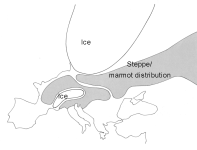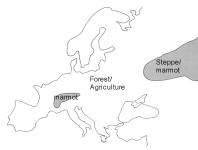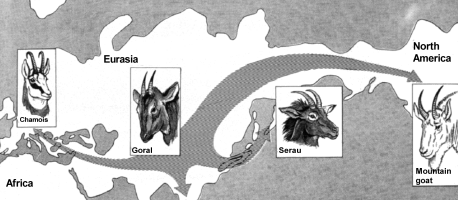- Together with the advancing glaciers, species like the mountain hare (Lepus timidus), that were present only in the north before the ice ages, migrated into Central Europe during the last ice age. Because of the warming of the climate in Central Europe, some cold loving animals followed the retreating ice bodies northwards. Other animals migrated to higher altitudes and so colonized the alpine zones.
- Also during glaciation, large grass steppes spread from Asia to Central Europe. These steppes were excellent habitats for species like the marmot (Marmota marmota), which came to Europe at that time. After the climat became warmer and the glaciers retreated, forests displaced and fragmented the grassland steppes. Some marmot populations also retreated eastward but others remained in the European steppe habitat that was incrementally displaced upwards by forests and today is found mainly above the timberline.
|

1 - Actual arcto-alpine distribution of the mountain hare (Lepus timidus)
|





